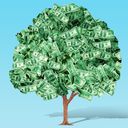The "coiled spring" economy: Why pent-up demand may be underestimated

Economic growth could be hot for much longer than expected as shortages continue to push out the unsatisfied demand for goods and services.
Why it matters: The current blistering pace of growth has been spurred by the rapid reopening of the economy, a phenomenon some experts say can't last.
Yes, but: Economists tell Axios that while growth may slow, it’ll still be unusually strong for a while because so many people and businesses are holding off on purchases — either because stuff isn’t available or prices are just too high.
What they’re saying: BofA economist Ethan Harris says the U.S. economy is like "a coiled spring."
- "This is good news for the period ahead," Harris wrote in a report. "While a lot has been made of the temporary inflation pressures, there is much less discussion of the temporary constraint on real activity. However, you can't have one without the other."
- "There are only so many people that can go to Disney World in a given day," Renaissance Macro economist Neil Dutta tells Axios. Yes, even the happiest place on earth is turning people away.
By the numbers: Dutta says we should look at vendor lead times, or the amount of time it’s taking to deliver goods, to gauge just how backed up companies are with orders they can't fill right away.
- Average supplier delivery times have lengthened to record levels, according to a Markit PMI report released Wednesday. This data goes back to 2007.
- This confirms similar findings from the May ISM manufacturing report, which has data going back to 1987.
- Arbor Data Science’s Ben Breitholtz analyzed regional Fed surveys and concluded supplier delivery times may be at their highest level since 1951.
Also: Harris and SGH Macro Advisors economist Tim Duy argue the surge in job openings clearly represents unfulfilled demand.
- "In the last two months 837,000 people have been added to payrolls, but the number of job openings has jumped by 1.76 million," writes Harris in an email to Axios. "Unsatisfied new demand for workers is growing more than twice as fast as hiring!"
The bottom line: For months we’re going to keep getting reports that’ll underestimate the full strength of America’s consumers and businesses.
- "Effectively, as the economy hits more supply side constraints, our metrics of growth soften," says Duy. "But it shouldn’t be confused with a typical demand side slowdown."